What the street-food ban has really meant for Bangkok
It’s one year since Bangkok’s street food “ban” came into effect. The world’s still turning, and we’re still eating ba mie on our lunch break—but not everything’s right with Bangkok’s sidewoks.
Last year’s reports of a government plan to clear Bangkok’s major sidewalks completely of their street vendors caught the city unaware, arriving only days after CNN’s crowning of the city as “the world’s street food capital.” The food-loving world—with grilled pork skewers, wok-fried noodles and late-night bowls of rice porridge in mind—met the news with a chorus of dismay. Many criticized the move as a tragedy, a whitewashing of the local culture, and shameful treatment of the city’s working class who depend on cheap food to survive.
So when articles surfaced hours later exhorting the world’s foodies to relax because street food would remain untouched, they took on the tone of a Trump administration communications official backpedaling over “fake news.” Why would anything be announced at all, if nothing was to change? And if nothing had changed, why were vendors already being cleared from certain areas?
It’s now one full year since the “ban” came into effect, and the answers to those questions are beginning to surface.
“The only concern from City Hall is that the food remain sanitary”
Vallop Suwandee is chief consultant to the Bangkok Metropolitan Administration (BMA), and for over a year, the long-time civil servant has spearheaded the city’s current drive to “clean up” its streets of rogue hawkers. According to Vallop, initial articles announcing a comprehensive clean-up had been “misreported,” despite several media outlets directly quoting him outlining a ban on street vendors from the main roads of all 50 Bangkok districts.
The ban only concerned vendors with “temporary” permits, and “a minimum of vendors were affected,” he now tells us, adding that he is a fan of street food from around the Thonglor area. “The only concern from City Hall is that the food remains sanitary.”
But experts working with vendor groups and academics say that this isn’t the whole story. “It is clear that the ban isn’t just focusing on a small number of vendors or a particular neighborhood… it is affecting vendors all over the city, from a variety of backgrounds,” says Trude Renwick, a U.S.-based scholar working on her PhD dissertation on commercial space in Bangkok.
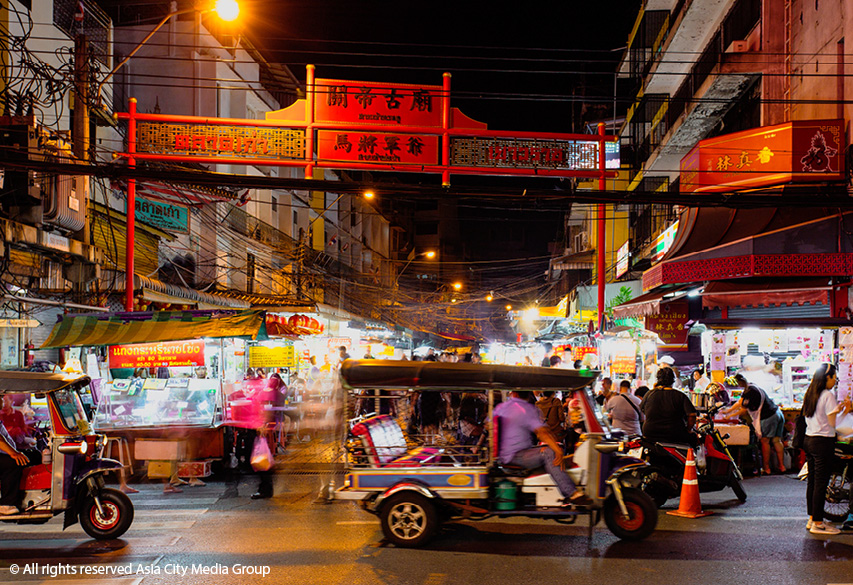
Bangkok street food first flourished during the ‘80s and ‘90s, when the city was under the tenure of former governor Chamlong Srimuang. “The BMA allowed vendors to conduct business on sidewalks in order to lessen the burden on family income,” Vallop says. “Pedestrians had no objection because the city of Bangkok was not so crowded.”
Today, he says that the clean-up of the streets is simply bowing to the will of the people, who complain that vendors are taking up too much space in a city of an estimated 8.5 million people. The areas most affected are the ones with the most number of complaints—Siam, Sukhumvit, Victory Monument and Saphan Lek.
“Personally, I think Bangkok should look like Singapore”
Vallop also confirms speculation that real estate developers are often behind the anti-street food movement, claiming that the presence of vendors affects their property values. Ultimately, he says he would like to see street food relegated to certain areas, as it is in Kuala Lumpur, Jakarta and Singapore.
“Personally, I think Bangkok should look like Singapore,” he says. Unfortunately, Thais make less money (a yearly average of US$5,911 per person according to the World Bank in 2016) than the denizens of Singapore (US$52,963), making access to cheap food more of an imperative.
But Vallop insists that the BMA is looking out for lower-income workers too. The sub-sois of cleared areas such as Thonglor are still open to food vending, and the outer areas of Bangkok remain unaffected. Yaowarat and Khaosan Road continue to be havens for street food-loving tourists. Shoulder-pole hawkers and mobile cart vendors who move from place to place are “welcome” to continue selling, he says. “But please do not come to Bangkok just to set up a food stall after harvest season. “You have to care for the general public and the land value of the shop-house right behind you.”
The BMA is also considering an incentive for developers that would allow them to construct higher buildings and increase rental space on the condition that they include a food court in their complexes incorporating street food vendors from the community.
All the BMA would like in return is a little thoughtfulness. Vendors “have to be considerate,” says Vallop. “The pavement is for pedestrians. You pay no rent, you pay no sales tax. Please pay back to the community. We need to live together. We need to live in harmony.”
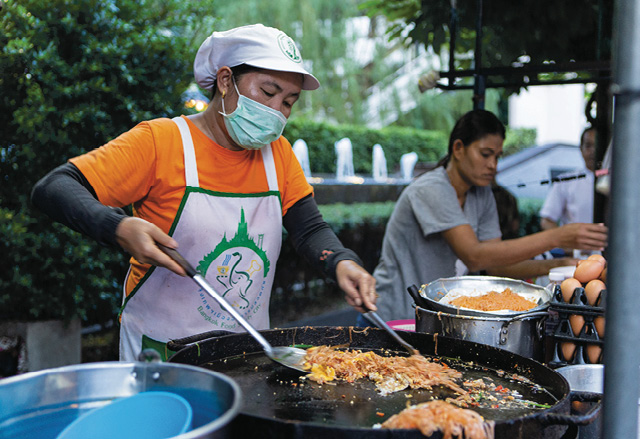
Treating the vendors as a nuisance that must be tolerated and managed obscures the genuine good—and money—that they bring to their communities, aid workers say. Sarah Reed of U.K.-based non-profit organization Wiego says the removal of street vendors from areas has actually cut down on foot traffic, adversely affecting the sales of surrounding businesses.
Vendor evictions in Pak Khlong Flower Market, Ramkhamhaeng Market and Sukhumvit resulted in across-the-board sales drops, lessened operating hours and even some closures for surrounding shop-house businesses, Wiego found.
”Before, I thought that this was a problem for the street vendors,” one business owner in Ramkhamhaeng told Wiego. “But now I know that the street vendors’ problem is my problem too.”
Business owners and vendors alike are now finding ways to be heard. In Ari, plans to clear the area were shelved when vendors banded together to form their own advocacy group. Meanwhile, a recent petition to the District Office signed by 30 Sukhumvit businesses is asking that the vendors be permitted to return to Sukhumvit Soi 11.
“The silver lining to this dark cloud is that vendors have gotten organized,” says Reed. “There is now a network of vendors that can represent their own needs and interests, and communicate the incredible asset that vending represents to Bangkok’s economy.”
“Now I know that the street vendors’ problem is my problem too”
The cycle of celebrating and discouraging street vending is nothing new to long-time veterans of the street food scene like Sithidet Siripongwatoch of legendary guaythiew kua gai (stir-fried chicken noodle) stall Nai Peng. The Sam Yan neighborhood he has worked in for the past 30 years has changed drastically since he first set up shop at 29, gradually giving way to an ambitious plan to form Thailand’s own version of “Silicon Valley.” Just a short walk from his bustling, open-air shop-house wreathed in wok smoke, newly-built Chinese-style shop-houses slicked in red paint mimic the buildings of Singapore’s Chinatown.
“We don’t plan on going anywhere,” said Sitidet of his stall, which won Michelin’s Bib Gourmand award last year. The closure of the nearby Suan Luang market and recent renovations have cost him up to three years’ worth of revenues, he estimates. All the same, “we’ll stay until they stop renewing our lease, and then move to the next street over.”
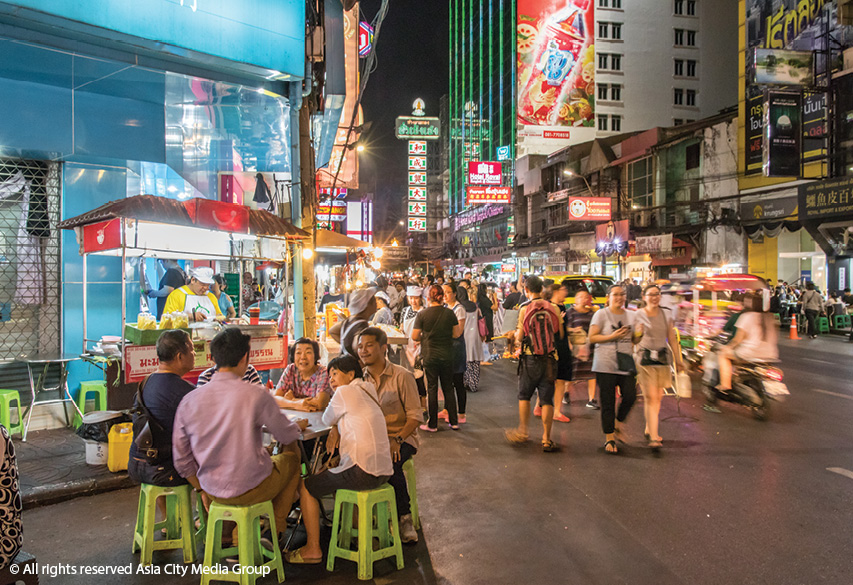
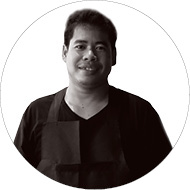
Lek, Shark fin soup vendor
“I can’t afford to rent a shop-house. Prices here can go up to B300,000 [a month] for a space on the main road. I’ve already started seeing officers coming to regulate and it’s terrifying knowing we can’t do anything but oblige.”

Nok, Pa tong go (fried dough) vendor
“I guess we should consider ourselves lucky that we are only getting regulated but not cleared. Right now, we vendors have to help each other. We have to listen to what they say: stop having stalls that stick out into the road, stop washing dishes on the road.”

Jeng, Jui guay
(steamed rice cake) vendor
“If you remove street food everywhere else, there will be a lot more people in Yaowarat and wouldn’t that make things even more disorderly? Plus, this is not the only tourist destination in Bangkok. Tourists want to go all over the city. They need street food elsewhere too.”
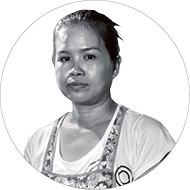
Nui, Somtam vendor
“We’re poor. We can hardly afford to rent a home, let alone a shop-house to sell our food. The government needs to care about Thai people and Thai culture, not tourists. Thai people love street food. Somtam is our national food. People rely on it to be accessible everywhere they go.”
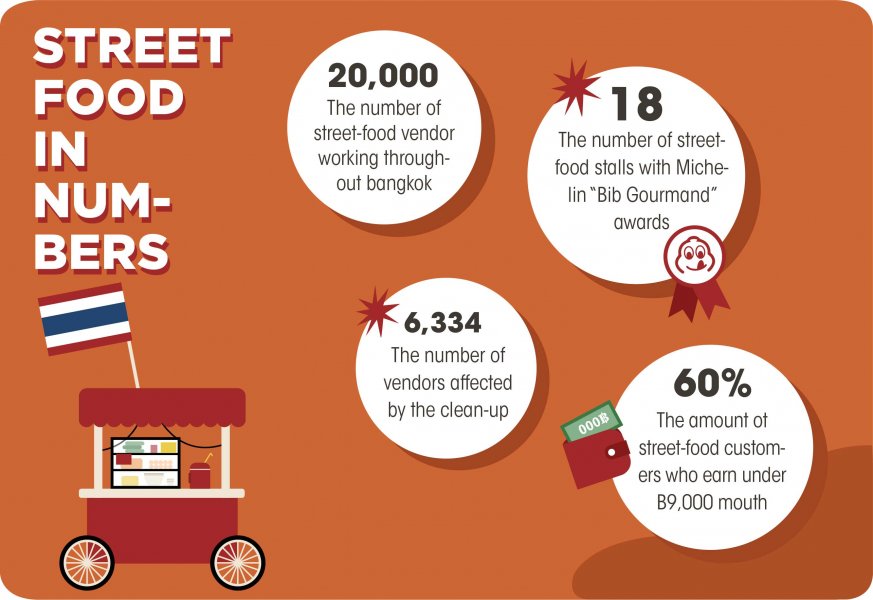
Sources: Thailand Development Research Institute (TDRI), National News Bureau of Thailand